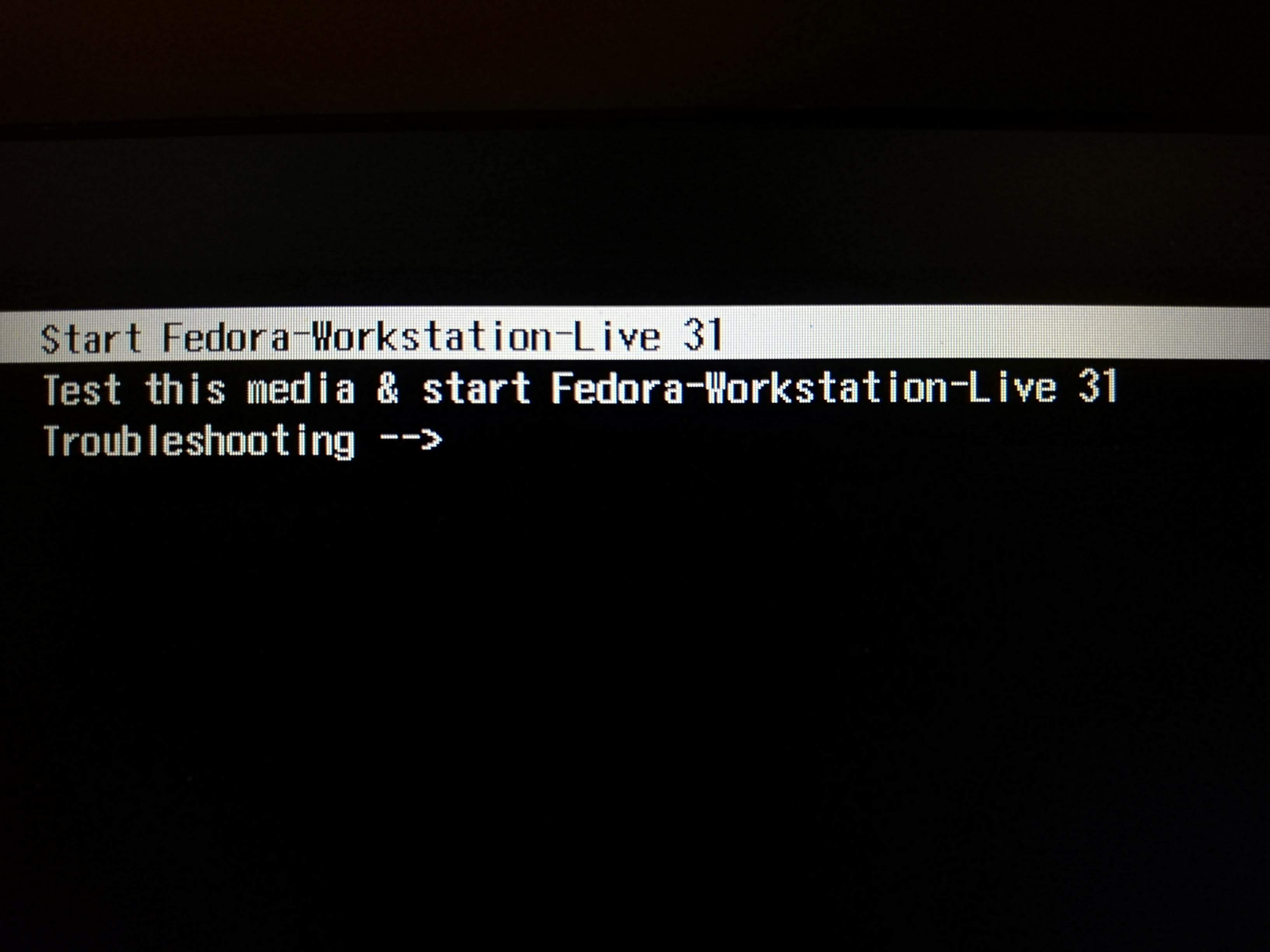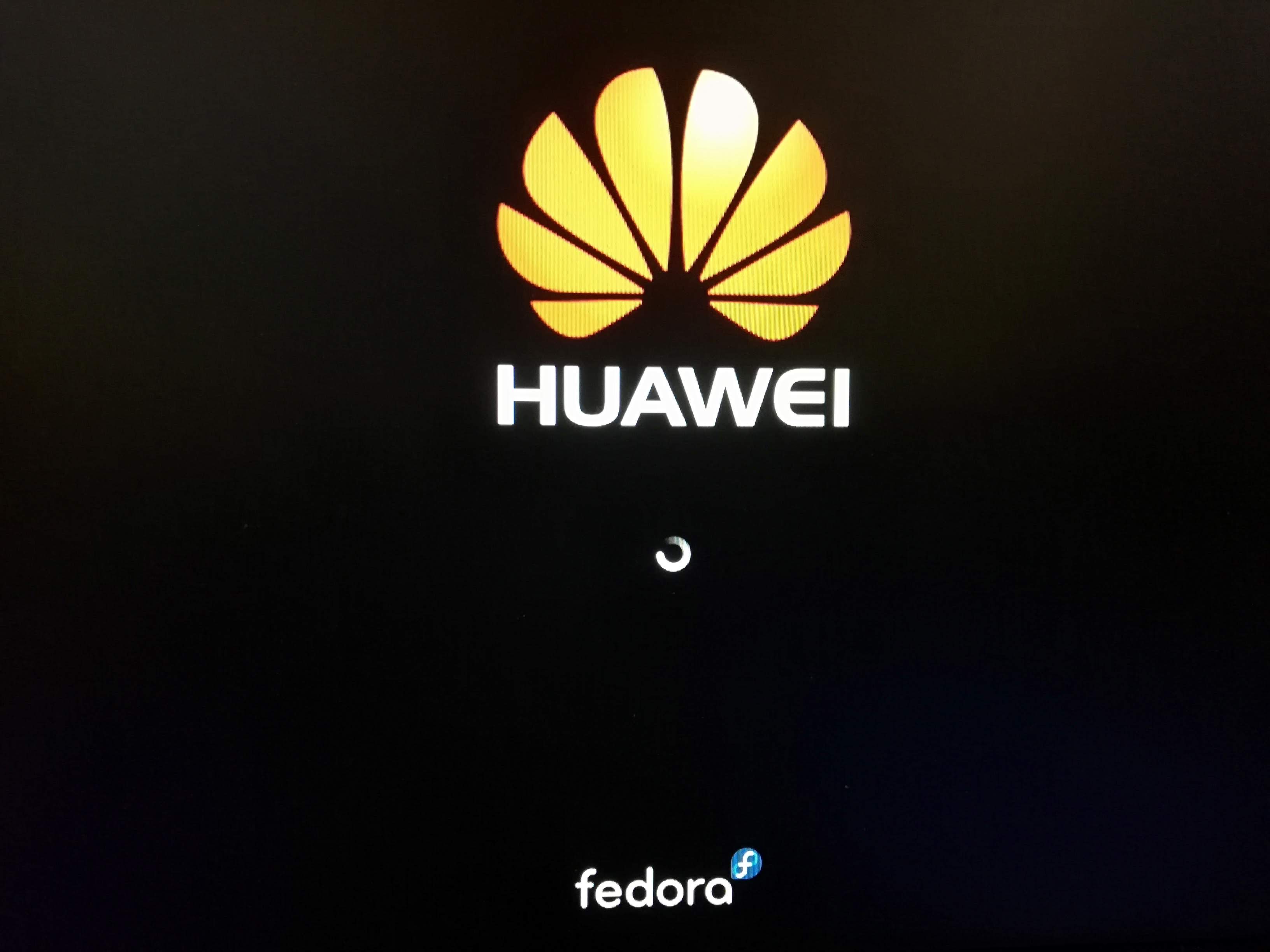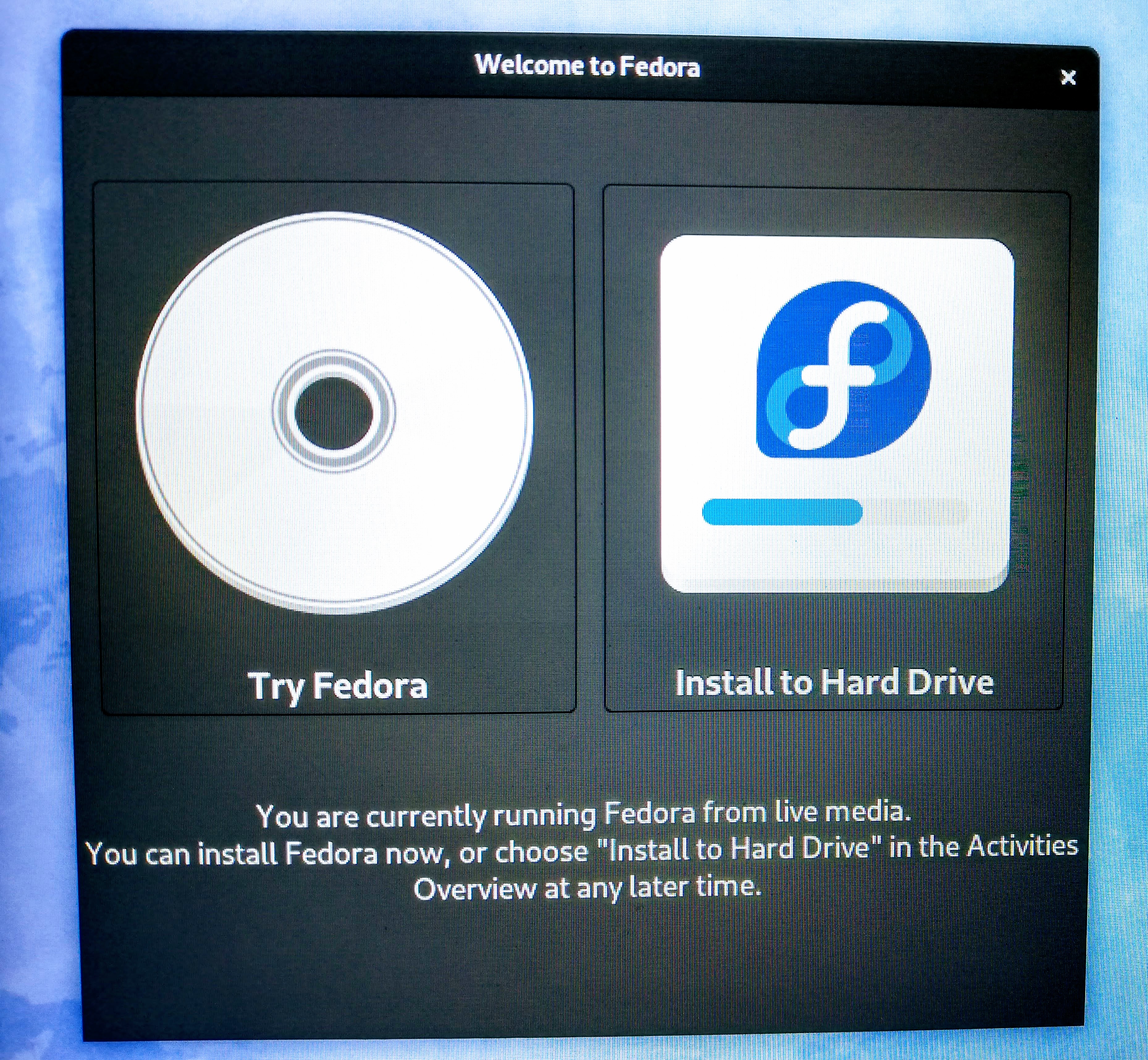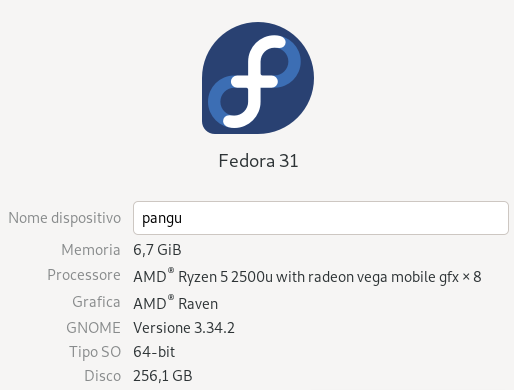Linux on Huawei Matebook D
Last year I bought an Huawei Matebook D to use at home for light workload like surfing the web (is this term still in use?) and take notes for my blog.
The Matebook replaced my tablet, I preferred an actual laptop over a tablet with a keyboard.
After a year of use I finally decided to install Linux on the laptop. Here I share my experience.
I’ll keep updating this post with new findings.
Hardware
The laptop is an HUAWEI KPL-W00D with AMD R5-2500 CPU, 8GB of RAM, 256GB of SSD and a full HD 14" display.
I’m pretty satisfied by the form factor and performances, it is exactly what I expected.
OS
The laptop comes with Windows 10 Home, on the disk the usual recovery partitions are available for recovery.
Move to Linux
For no particular reason I chose to try Fedora 31 . My plan was to try other distros like ElementaryOS or Mint but life happens.
Installation
Installation was very smooth. First thing I did a backup of the Windows partition with Veeam .
Then I created a bootable USB drive with Rufus and booted the laptop (press F12 to boot from USB).
After testing all the necessary hardware works I installed Fedora in the internal SSD, deleting all the Windows partitions.
What’s working
All the keyboard shortcuts work out of the box, including:
- screen brightness adjustment
- volume
- mic
- wifi switch
- print screen
Battery monitor seems reliable.
Mouse Logitech G305 works.
Bluetooh works! I successfully paired my headphones Sony MDR-ZX7700BN .
What’s not working
Suspend to disk works fine.
hibernation is not working, the laptop has some weird graphical issues and needs an hard reset to restart.
As a workaround I set the action for the power button to Suspend.
Update Jan 7th
The system froze a few times. Googling the error message I found this suggested solution
dnf remove tpm2-abrmd
It seems to work so far.
Update Jan 11th
GUI still freezes sometimes. Updated to kernel 5.4.8-200.fc31.x86_64.
Software
Most software I use outside work is available on Linux so I just installed what I need to start.
Firefox with Bitwarden is a must.
Krypt.co to ssh to my machines and GitHub .
Ghostwriter to edit markdown files for and Hugo to create my website.
Visual Studio Code for Python scripting (remember to opt-out for Telemetry ) or use VSCodium
Next steps
I use Veeam Desktop to backup my machines so now I need to find a replacement.
One option is to use Syncthing to sync data to a NAS and then backup the data on the NAS itself, or Restic .
Hibernation is not that important, boot time is so small that a shutdown has no impact. I’ll keep and eye on forums for a fix.
Wrap up
I still use Windows on my work laptop, WLS , Docker and Google Cloud Shell satisfy my need of Linux.
For non business use Linux makes more sense to me, for privacy , security and management.
I noticed CPU and RAM use are much lower that on Windows 10. The laptop has 6,8G of RAM free because video memory is shared. I noticed I barely reach 4G running my usual setup.
The WAF test passed successfully, mainly because the browser is the only application used ;-)
My experience with Fedora so far is good. This laptop is my secondary machine, after some use I’ll try the same on my main machine, an Intel NUC .
Update Jan 12, 2020
After almost a week I didn’t manage to fix the problems with the GUI with Fedora 31. It freezes for 5 to 10 seconds with a big impact on usability.
So I switched to Ubuntu 19.10 , no problems so far. Hibernation is not an option, suspension works fine.
It took 30 minutes to re-install the OS and all the software I use for personal productivity.
Update March 2021
After some OS freeze using Google Classroom I decided to try Fedora again, distro hopping as troubleshooting.
I’ve downloaded Fedora33 , tested it live and after verifying that all the main components were working fine I’ve installed the OS to the SSD of the laptop.
During the first days of use the laptop had none of the issues it had with the older release, Google Classroom worked great and the suspension using the power button works.
In less than one hour, I’ve installed all the usual software I use, restored my password manager and cloud account using MFA, synced the git repos and local data.
Compared to Ubuntu, the USB/ethernet adapter was detected and set in DHCP mode automatically. Bluetooth and WiFi worked out of the box again. This is still something I notice, being old enough to remember how many times I’ve recompiled the kernel to make the first BT dongles work 👴
Will update this post if I experience any issue 🤞




